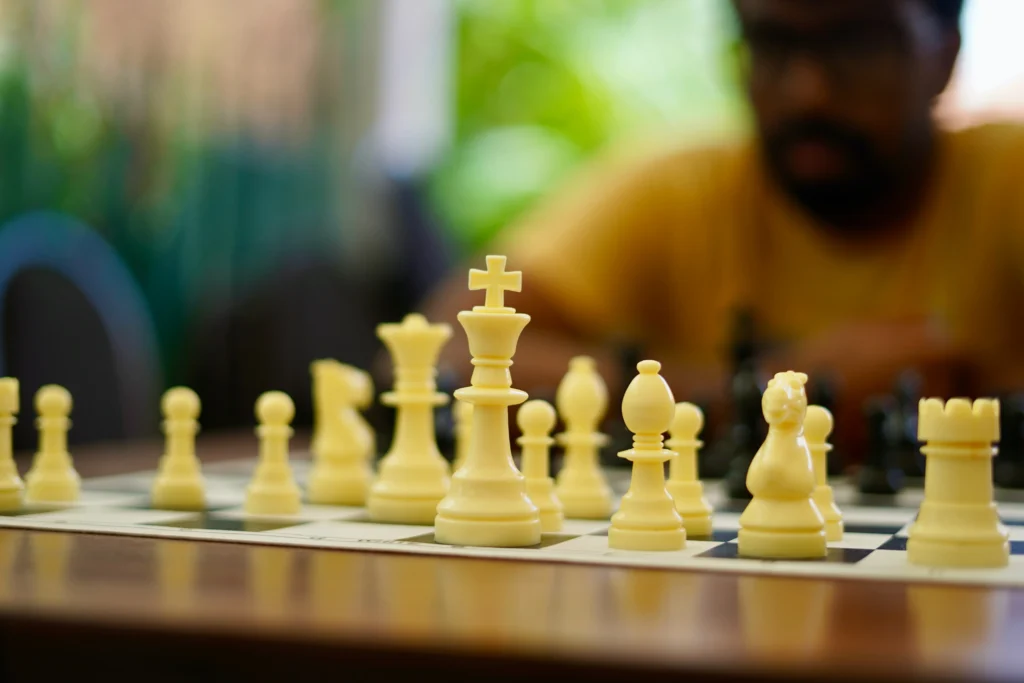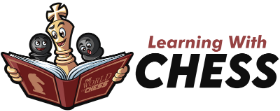Calculation In Chess: Training Our Superpower
15/04/2023 - Actualizado: 01/05/2023
When I talk to children about calculation in chess, I explain it to them as a superpower, I tell them that in chess it is possible to have a superpower, which is to see the future, that in chess it is possible to have the ability to predict what will happen and that the winner of the game will be the one who can see the future best.
Calculation in chess is exactly this, it is to see the possible futures and from them to find the most favorable future for us (just like Doctor Strange 😁), the difficulty of the calculation lies in that, it is not enough to see the possibilities, but to see which is the best for us, if we calculate 10 moves forward, but from move number 2 we reach a bad position for us, it is not much use to calculate so many moves, it is better to calculate only 1 move into the future, as long as it is always the best.
In today's article we will see the techniques to simplify the calculation in chess and ways to train it.
(Visit our article about tactic and have a super superpower)
Techniques for Calculation in Chess
To train calculation in chess what we have to do is exactly "this", to calculate, we have to train in positions where there are a lot of variations and choose the best one for us from them. There are techniques and things that are necessary to know that will help us and make the work of calculation easier, let's see some of them before jumping right into the training.

Forced Moves
One of the most famous techniques in chess is the forced move, which limits our opponent's actions and simplifies our calculation:
⦁ Checks: It is the most forced move in chess, where the possible responses are limited to a few, simplifying our calculation.
⦁ Captures: It is also a forced move, not at the level of the check, but it forces our opponent to respond to our offensive.
⦁ Threats: These are moves in which we threaten to take advantage with our next move.
In order for this technique to be effective, the order of calculation must be the same, first checks-capture-threats, and to maximize its effectiveness, we first identify all the moves, all the checks, all the captures and all the threats, even if they seem to be bad moves, because if they are not useful, a few seconds will be enough to discard them when we start calculating.
Algebraic System
Besides being useful for writing down our games, the algebraic system is an ally when we calculate, if instead of calculating saying "if the knight goes here, I'll do it here", "if he puts me in check, I'll move here", this way would not be a problem, only that in this way we are more likely to forget where the pieces are, this is where the algebraic system comes in to help us calculate in the following way: "20.Nc4 - Bf4", "30.Ne3+ - Kg1", where we will always know where our pieces are, giving us the possibility of returning to a position without having to start the calculation all over again.
Evaluation
Often, when we calculate a complex variation that we do not like at all, we jump to calculate another variation that we do not think is the best either, and we calculate a third variation that seems more promising but we do not like it either, and in the end we recalculate the first variation, then we jump to the second, and the first again. So we jump from variation to variation without being able to make a decision until we realize that our time is running out and we are forced to make a decision in order not to run out of time.
Evaluation helps us save all this wasted time jumping from variation to variation. At the end of our calculation of a variation it is very important that we come to a conclusion such as "this position is double-edged", "in this position I have a slight advantage because of the isolated pawn" or "in this position my pieces have more activity" so that when we have to decide which one to choose we can compare our conclusions and we do not have to see all the variations again to make our decision.
Training the Calculation in Chess
Now we will see how to improve our calculation, how to train it so that it becomes a deadly weapon in our arsenal.
Positions with Many Variations
One way to train our calculation is to look in the chess books you have, or on the Internet, for positions that have many short variations, with no more than two or three moves per variation to start with. Once we have a few positions, say 5, we need to solve these positions without moving the pieces and practice the techniques to add them to our arsenal.
It is very important that we transfer these positions to our physical board and not start calculating by looking at the book or our computer screen.
Let's not forget that the purpose of training is to prepare us for competition, so training must simulate as closely as possible the competition in which we will participate.

Blindfold Chess
I am sure that more than one of you were surprised to find Blindfold Chess in this article, but it is very effective and much easier to practice than people think.
Blindfold Chess greatly improves our visualization so that we don't forget where we put the pieces in our calculation.
At first we start without a chessboard, just asking ourselves what color such a square is, for example what color is C4 or H7.
Once we have mastered the color of the squares, we start trying to solve simple chess problems using only the coordinates, without seeing the board physically, only in our head, for example:
White pieces: Pawns on A2, B2 and C2
King on B1
Rook on D1
Black pieces: Pawns on H7, G7 and F7
King on G8
Rook on B7
White plays and checkmates
Solution: Rd8++
When we have mastered these basic exercises, we can move on to others of greater difficulty, and it would even be a good time to start playing a game without seeing the board, even if we are not able to play the whole game blindfolded, remembering that the important thing in this training is to improve our visualization.
For this training, we can get the exercises from the Internet or there are also smartphone apps dedicated to blindfold chess.
What other ways to train calculation in chess do you know?
⭐️ If you want to know more about other articles similar to Calculation In Chess: Training Our Superpower you can visit our category Chess Training. We are waiting for you inside 👍


Leave a Reply